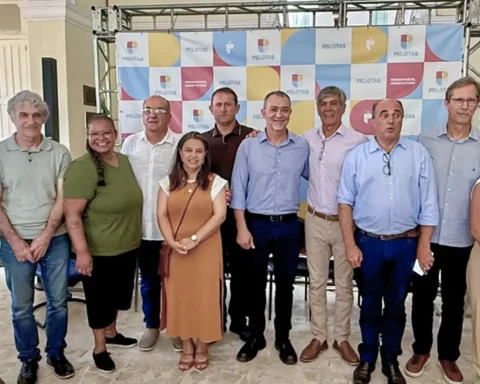The Household Consumption Intention (ICF) indicator grew by 0.8% in March and reached 96.7 points, the highest level since March 2020, also staying above the February result when it reached 95.7 points. As a result, consumption intention remains below the positive assessment zone of 100 points since 2015. The result was released this Tuesday (21), in Rio de Janeiro, by the National Confederation of Trade in Goods, Services and Tourism (CNC ), which calculates the index monthly since 2011.
Izis Ferreira, economist at CNC, said that, despite having maintained the upward trend, the increase was less expressive. He added that this is largely due to the loss of breath in the optimism of lower-income families. Since the last quarter of last year, the average and low income consumer was still more hopeful than the richest, but the panorama changed now in March, he explained.
“We have the middle and low income consumer showing less optimism. Optimism grew more for those with high incomes. This in a context of high interest rates, who has financial savings and who manages to have a financial balance of the budget or making any investment, [eles] are seeing their income multiplied, but this is not the reality of middle and low income consumers in Brazil”, he stressed in an interview with Brazil Agency.
Inflation impact
Izis added that the middle and low income consumer suffered a lot from the high inflation of 2022 and, when it slowed down this year, it eased the income of these families a little, but there are still needs beyond the issue of the impact of inflation.
“He [o consumidor] now points to expensive and select credit as a problem for credit purchases. We know that Brazilians have the habit of credit and installments and apparently this difficulty in accessing credit has limited the intention of consumption. This is a problem that is more latent for those with medium and low incomes because the risk of default is greater. The bank is no longer lending to him, and when it does, it is at a much higher interest rate. In general, it is more expensive and more difficult to make purchases in installments and the consumer has pointed this out as an obstacle to consumption ahead”, he said.
According to the survey, 37% of families reported that access to credit is more difficult. The index that measures the ease of installment purchases dropped 0.8% and remained in the negative quadrant (90.5 points). The study also showed that three out of four consumers consider that the moment is not favorable for the purchase of durable goods.
rich
The economist revealed that, in March, the consumption intention of people with income above 10 minimum wages, considered in the richest range, surpassed that of those with medium and low income. The increase in the consumption intention of the richest advanced 2.2% in March.
Women
Regarding gender, the study pointed to a growth in female optimism over the last few months, higher than that of men. Although the purchase intention of women is still at a lower level, in March it increased by 1.5%, while among men it increased by 0.6%.
The study indicated that women are also more satisfied with access to credit and installment purchases. As a result, they are proportionally more indebted than men, according to data from the Consumer Indebtedness and Default Survey (Peic), also prepared by CNC.
“We have seen more women enter the formal job market, formal employment. We have seen a greater number of women benefiting from public policies through the main income transfer program. They are more indebted, but apparently they are managing to access more credit. So, we have factors that have led these women to increase their optimism more”, she pointed out.
The economist estimated that, soon, the indicator of women in this item may surpass that of men. “As the indicator has been growing more expressively in recent months, for women it is quite possible that it will surpass the index for men soon, because today there is a broader look at public policies for women, we have had the issue of gender well treated by society. In a way, this has an impact on intent to consume,” she concluded.
Actual job
The indicator related to satisfaction with the current job performed better among middle and low-income consumers in the first quarter, while it declined in the same period among higher-income consumers.
“Satisfaction with their level of employment is greater for low-income consumers because the labor market – over the last few months – has been absorbing people with less education, less schooling and paying lower wages. So, we have a greater number of consumers from middle and low-income families who are more satisfied with their current job than high-income consumers, who are showing some discomfort with their current job. You have seen many large companies, technology-intensive companies, lay off a lot of people. The main profile of this worker who has been dismissed is the most educated, with a higher salary, who is in the highest consumption group”, he analyzed.
Projection
For the next three months, consumers of all income brackets are projecting an improvement in their level of purchases. According to the economist, he is thinking that up ahead the conditions will be better than the current ones.
The survey also indicated that the perspective of consumption – for the third consecutive month – stood out with the highest monthly growth. This time, 3.2%, reaching 103.6 points. Since October last year, the indicator has evolved more than the current level of consumption. The conclusion is that families intend to have better consumption conditions in the future. In this item, according to the economist, although it has grown in both groups, the low-income consumer revealed a better perspective than that of the highest range.
“This means that, when we look ahead, high-income consumers have more access to information and can project a scenario with a little more information than low-income consumers. I usually say that the low-income person is considering that his dream is better than reality, “she emphasized.
Income
The number of people with a positive assessment of their current income remained stable (34.9%). For CNC president José Roberto Tadros, this means very positive expectations and more controlled inflation. On the other hand, it also shows a challenge for immediate income.
How is the search
The Household Consumption Intention survey represents a leading indicator with the intention of anticipating potential retail sales. The items surveyed with consumers are important aspects of family life, such as current and short-term consumption capacity, household income level, credit conditions, job security and quality of consumption, present and future.
















